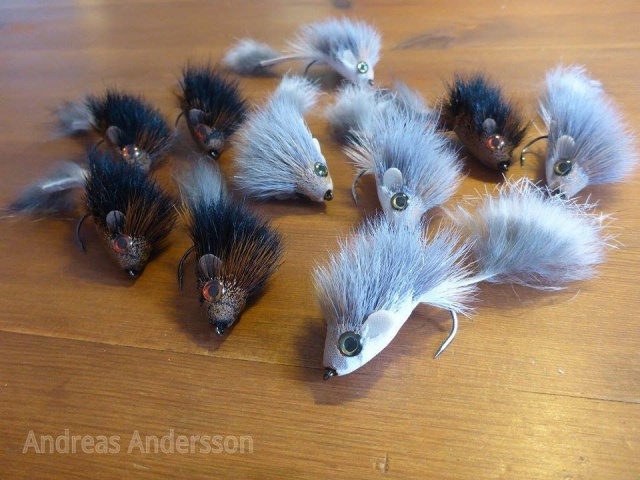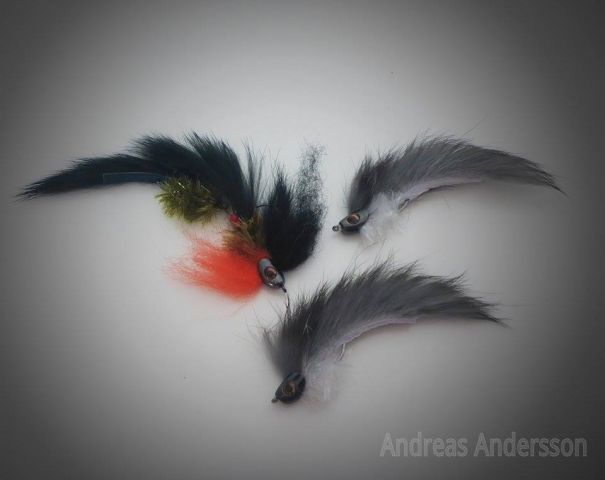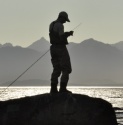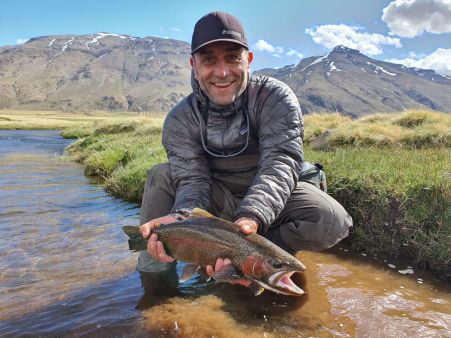Andreas Andersson is a professional fly tyer from Sweden, he's part of the Partridge of Redditch and DeerCreek pro teams. Here's more about him and his flies.
Fd: How did you first get into fly fishing and tying?
Andreas: Well, fishing in general has been an important part of my life since a young age, I grew up on the Swedish countryside close to a lake, in a family that loves the outdoors. My first contact with fly fishing and tying in particular was at a local fishing club that let youth try it for free. I was somewhere around age twelve and the first flies I ever tied were actually salmon flies.
Fd: Is there a reason why you specialized on deer hair flies and streamers? What were you fishing for those days?
Andreas: Yes, of course, mostly because I really like fishing for predators. Even though I like to carefully place a dry fly in front of sipping graylings, I love the heart race of a pike exploding on fly... a little bit of an adrenaline rush. That's the fishing part of why.
From a fly tyer’s perspective, it’s definitely the challenge, tying really good deer hair flies is not the easiest style of fly tying. I learned that quickly, and definitely still consider myself to be in practice. But it’s also a very free and creative style that I enjoy doing.
I was mostly chasing northern pike as well as brown trout at the time.
 Fd: What are your main influences when creating patterns?
Fd: What are your main influences when creating patterns? Andreas: You could say that my main influence is the targeted fish, either what they normally eat or what causes them to make reaction/aggression strikes. If I’m tying flies for someone else, I will usually talk a lot with them about what normally works as well as doing my own research online for every order. It’s so much fun trying to "crack the code" on making effective flies for fish on the other side of world. So basically I’m trying to tie something that looks like prey or an attractor..or im doing a mix of both.
Another influence for sure is other fly tyers, I might combine an American style deer hair diver head with a Scandinavian style piketube tail when making a fly that's meant to be fished in Australia.
Fd: What tips can you give to the tiers that want to work deer hair like you do?
Andreas: Ohh a lot, first and most important TAKE YOUR TIME.
- Strong thread is a must, I use 200denier gelspun for my bigger bugs.
- Get good hair, I use deer belly hair and look for the longest, thickest hair I can find. Thick because it’s better for making tighter packed flies, that's durable and look better; long because you only get half of the length of the hairs when the thread flares it.
- A good hairpacker will help to, I use one called the Fugley packer to get tighter bugs.
- Double edge razorblades will give a lot cleaner looking cut than scissors ever will.
Those are only a few tips, but I could go on for hours... Practice, take your time and make ‘em tight.
 Fd: Which are the aspects that you consider to be fundamental for these streamers to be effective?
Fd: Which are the aspects that you consider to be fundamental for these streamers to be effective?Andreas: Again, making the fly look and/or move like prey or causing a reaction strike by aggression are usually the keys I’m looking for. Also having a specific plan of what you want the fly to do, you can make a fly hover, jig, dive, pop or slide sideways by changing just one or two things in the tying process. I try to be very specific about such things. Even though I consider color choices carefully, I believe movement and profile to be the two most important aspects of making effective predator flies.
One other thing I consider important is how the fly casts, nowadays I have gotten pretty good at making a fly look big when needed without being heavy and horrible to cast. It’s no fun leaving the water with a sore shoulder after fishing 10 inch bunnyfur for a day, in my point of view.
Fd: What other type of flies do you enjoy tying?
Andreas: My first thought is, a lot… I enjoy trying and learning new techniques and styles, it’s a fun challenge. I believe you can do anything with good thread control and practice, I haven't tried a lot of classic salmon flies though so I might be wrong.
My favourite flies to tie besides predator flies are classic American style dry flies, especially hairwings like Wulffs, Stimulators, Trude's, Humpy's and such. It’s a good break from what I normally do and it suits my small stream trout fishing very well.
 Fd: What are your thoughts on the future of fly tying and the new kinds of materials?
Fd: What are your thoughts on the future of fly tying and the new kinds of materials?Andreas: Well, one of the things I've noted is that a lot of the newer materials have really made fly tying easier than before… or at least faster.
Take hackle for example, you used to be obliged to put multiple feathers on a hook to get a decent hackle on a dry fly. That was because the "sweetspot" on the feather was so short, nowadays with the modern genetic hackles you can instead get multiple flies from one feather.
Another thing that is relatively new to me is UV cured resin. I use DeerCreek resins and comparing it to the epoxy type glues I used to work with, it’s now so much easier and faster. And a lot less of a mess too, since I don’t have to mix anything, no yellowing, no waste; and it cures bonedry in a couple of seconds under a UV torch. I use that a lot for bellys on deerhair flies and to protect eyes and heads on streamers.
As for the tying itself, I think there's a lot of fly tyers doing a lot of cool and inventive stuff around the world. And every now and then someone comes up with an idea that sticks, what I mean is: classics are usually classics for a reason.
























